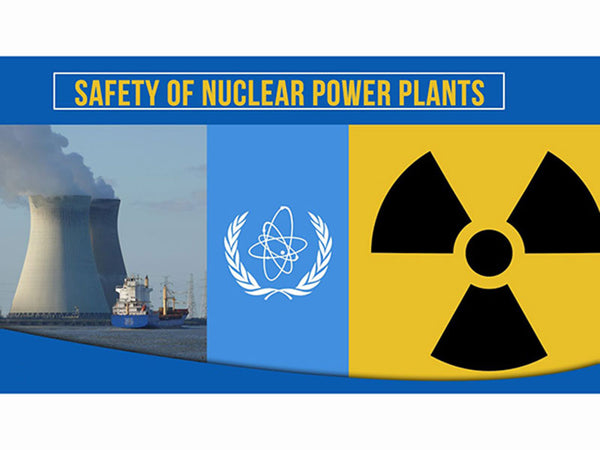
main content:
- 1 Barrier to prevent nuclear leakage
- 2 Monitoring of nuclear power plants
- 3 Emergency, already prepared
- 4 Get out of the shadows and rejuvenate
- 5 Don't be afraid of nuclear
It is impossible for a nuclear power plant to have a nuclear explosion. Under normal circumstances, the emissions of radioactive materials are much less than that of a conventional coal power plant. So what can I worry about? Indeed, nuclear power plants are very strict in the management and disposal of the "three wastes" they produce, and their impact on the environment is extremely slight. The problem is that if an accident occurs at a nuclear power plant, it will cause radioactive pollution, which is always the most worrying thing for the public. Like the Three Mile Island nuclear power accident in 1979 and the Chernobyl nuclear power accident in 1986, people have left a psychological shadow. But it should be noted that nuclear power accidents, especially major accidents, can be prevented. The world's nuclear power history has reached nearly 10,000 reactor years (a reactor operating year is counted as a reactor year), and major accidents rarely occur. Even so, people are still learning from experience and lessons, making nuclear power safety guarantees more and more perfect.
| Tips: Three Mile Island Nuclear Power Accident
On March 28, 1979, the pressurized water reactor of Unit 2 of the Three Mile Island Nuclear Power Plant in the United States automatically tripped the feedwater pump of the steam generator, as well as other mechanical failures and operational errors, causing the core to lose water. Although the reactor stopped reacting immediately, the residual heat of the core could not be conducted and the temperature rise caused the components to be damaged and partially melted. The zirconium metal reacted with water to produce hydrogen and exploded, and a large amount of radioactive gas was released into the environment. The accident did not cause casualties or serious damage, nor did it cause serious radiation effects on the surrounding public. The “containment vessel” of the PWR played a major role and retained most of the radioactive iodine. However, the social impact of the accident is very serious. Due to information and lack of emergency preparedness, 130,000 residents around the nuclear power plant spontaneously evacuated unnecessarily. Three Mile Island Unit 2 had to be shut down for a long time, and Unit 1 also ceased production and operation. |
| Tips: Chernobyl nuclear power accident
Before April 26, 1986, the Chernobyl nuclear power plant in the Soviet Union Ukraine had a nuclear power accident that shocked the world. The two-ash chemical explosion blew up the entire upper part of the plant, leaving the core exposed in the air. The reactor is a pressure tube graphite-moderated boiling water reactor. The high-temperature graphite caught fire and the skyrocket fire lasted for 10 days. A large amount of radioactive materials were released into the environment, including all inert gases and about 3.5% of the core material. The accident caused the death of 33 emergency workers, 256 people suffered various degrees of radiation damage, and evacuated about 200,000 residents within a range of 30 kilometers. The direct economic loss was huge. The accident cast a terrifying shadow on the nuclear power industry all over the world. Schematic diagram of the Chernobyl nuclear power plant
|
1 Barrier to prevent nuclear leakage
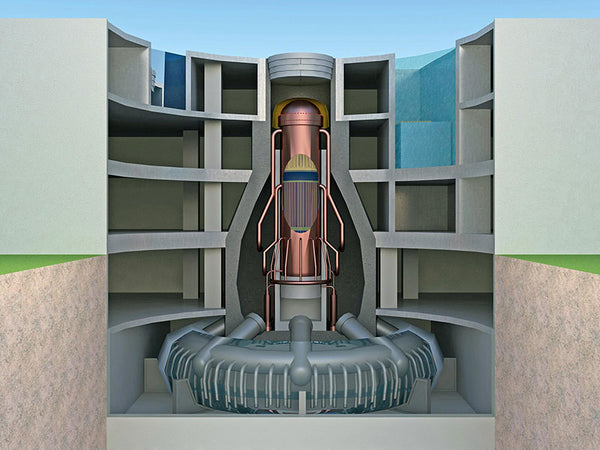
The first is to prevent accidents from the source and achieve safe production. In order to prevent the leakage of radioactive materials, nuclear safety regulations have set up many barriers to nuclear power plants, the most important of which are three barriers. One is the nuclear fuel cladding. This is a zirconium alloy cladding, which is stable below 1200°C. When the damage rate exceeds the limit of 0.25%, the damaged fuel element must be replaced. In this way, the leakage of radioactive material in the core is limited from the source. The second is to design the pressure boundary of the main circuit. If the core radioactive material leaks, it first reaches the water of the main circuit system. The pressure of the main circuit (primary circuit) system of the PWR is as high as 150 atmospheres. The fission products and activated corrosive products in the loop water are blocked in the loop system. The third is the containment. The water vapor generators, voltage stabilizers, and main pumps of the main circuit on the nuclear island are all radioactive. The pressurized water reactor nuclear power plant puts these components and equipment in a "containment shell". This containment is a huge cylindrical prestressed reinforced concrete sealed building with steel plates on the inner wall. This kind of containment can actually withstand pressures above 12 atmospheres, and it can seal off the radioactive leaks in the entire nuclear island system and handle them according to procedures. In the event of an accident, including a chemical explosion, a large amount of radioactive materials will not be released into the environment. The Three Mile Island Nuclear Power Plant had a containment vessel, so the accident did not cause serious radiation effects; the Chernobyl Nuclear Power Plant’s boiling water reactor did not have such a containment vessel, so that after a chemical explosion, radioactive materials directly entered the atmosphere, causing serious pollution. This is the most important flaw.
Brief flow chart of PWR nuclear power plant
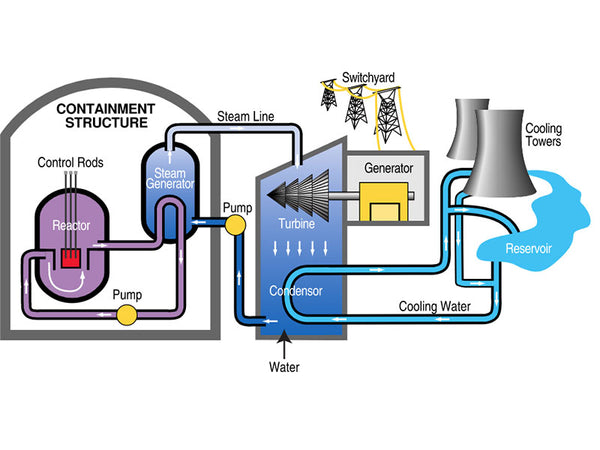
2 Monitoring of nuclear power plants

The nuclear power plant itself has strict plant environmental monitoring specifications and facilities to monitor the environmental impact of the discharge and leakage of radioactive materials. As the local government where the nuclear power plant is located, it has also established an off-site monitoring agency for the nuclear power plant in accordance with the regulations to closely monitor the impact of the nuclear power plant on the environment. For example, the Guangdong Provincial Government, through the Guangdong Environmental Radiation Research and Monitoring Center, implements rigorous off-site monitoring of nuclear power plants such as Daya Bay to ensure that the surrounding environment of nuclear power plants meets national and international safety standards. Off-site monitoring is carried out in three systems, and the systems confirm and complement each other, which facilitates comprehensive analysis and judgment. The first is an automatic monitoring system, that is, setting up a number of "monitoring sub-stations" at different distances and directions around the nuclear power plant, and monitoring the intensity of "gamma radiation" with a high-voltage ionization chamber. Nuclear power plants release radioactive substances into the environment, but they cannot escape this. The monitoring of this kind of equipment is the eyes of the public. The monitoring results are sent back to the headquarters computer through telephone lines and radio for analysis and automatic recording. The second is the laboratory monitoring system. Through the monitoring of environmental media around nuclear power plants, such as water, air, crops, The aquatic products, soil, etc. are sampled and sent back to the laboratory for analysis and measurement. The laboratory uses high-sensitivity instruments such as "gamma spectrometer" and liquid scintillation spectrometer, which can measure the type and intensity of radioactive materials and judge the discharge of nuclear power plants. The third is that the mobile monitoring system uses portable or vehicle-mounted gamma or beta, alpha monitoring equipment, which can measure and inspect the surrounding environment and people mobilely. With these monitoring methods and monitoring systems, nuclear power plants are also under close surveillance. Any "turbulence" will be detected in time, and emergency procedures will be initiated according to the level to respond.
3 Emergency, already prepared

Although the safety facilities of nuclear power plants are tight and thoughtful, accidents are still possible, and “emergency” measures must be prepared. Once a safety accident occurs, it will not cause serious injury or loss. In particular, the Three Mile Island accident and the Chernobyl accident have left people with profound lessons, and emergency work for nuclear power accidents has been placed in an important position.
What is emergency work for nuclear power accidents? The first is to establish local government emergency response agencies. For example, a provincial-level nuclear power accident emergency committee was established, an accident emergency plan was formulated, and branches were organized to implement various plans, including monitoring, communications, medical rescue, public security, transportation, education and information, evacuation and placement, and logistical support. Various agencies have divided the work according to plan and prepared for emergency. The second is to classify the corresponding state of the accident. Internationally, incidents of safety significance that occur in facilities are divided into 7 levels, and incidents of level 4 to 7 are called accidents. China also refers to international practices and divides the "emergency state" into four types: emergency standby, factory emergency, site emergency, and off-site (that is, off-site) emergency. The first three are that the accident is occurring, is relatively minor, and only affects the state of the plant or near the boundary of the plant, and mainly depends on the emergency response capability of the factory to respond. In the event of serious damage to the core or even melting and the possibility of loss of containment integrity, such as serious accidents above level 5, off-site emergency actions will be initiated. The Three Mile Island Nuclear Power Plant did not have emergency preparedness for accidents. The public panicked after the accident, resulting in huge confusion and unnecessary losses. The Chernobyl Nuclear Power Plant had emergency preparedness for accidents. Although the accident was very serious, the surrounding residents were not seriously affected. Radiation damage. The third is to hold accident emergency drills regularly or irregularly, so that the entire emergency system is well-trained and able to adapt to actual needs, find problems, improve work, and achieve perfection. The emergency work inside and outside the Guangdong Daya Bay Nuclear Power Station has already been done, which can be described as an example of emergency preparedness for a nuclear power accident.
Summary of International Nuclear Event Classification
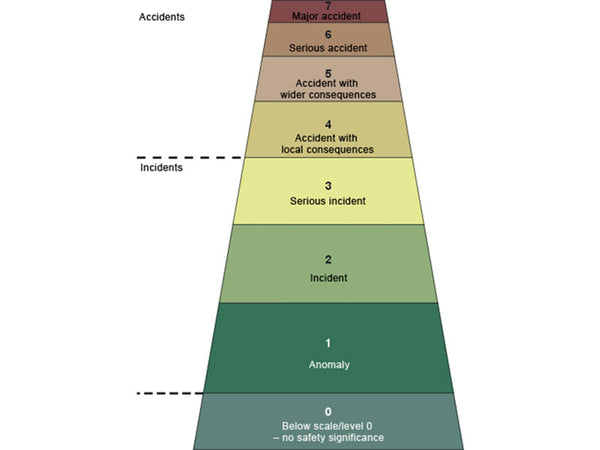
4 Get out of the shadows and rejuvenate
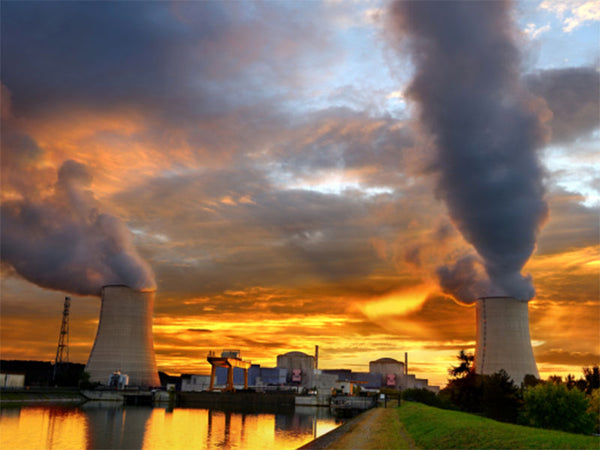
The discovery and utilization of nuclear energy is one of the major achievements of mankind in the 20th century. Since the Soviet Union built the first experimental nuclear power plant in 1954, countries have developed nuclear power production. By 1985, 375 nuclear power reactors had been built and put into production in 27 countries around the world, with an installed capacity of 258.7 million kilowatts. However, because nuclear energy and atomic bombs belong to the same family, the road to nuclear energy utilization is bumpy. In 1986, a serious nuclear power accident at the Chernobyl nuclear power plant made the already frustrated nuclear energy development worse, and people were "rolled eyes". Some people call it the "Sword of Damocles" hanging over their heads, maybe one day it will fall and a nuclear explosion will occur. Under the influence of this accident, voices opposed to nuclear power have spread, and the world's nuclear energy development has also entered a downturn. However, the superior characteristics of nuclear energy make it impossible for people to give up it. After five years of introspection, the world's nuclear industry has emerged from the shadow of the Chernobyl nuclear leak and is heading for a revival.
As of 2004, 30 countries around the world have developed nuclear power production, and there are 441 nuclear power reactors in operation, a significant increase from 1985 on the eve of the Chernobyl accident. The total installed capacity of nuclear power units is more than 363 million kilowatts, and nuclear power generation accounts for 17% of the world's total power generation. Nuclear energy has played a pivotal role in total energy consumption, occupies an important position, and continues to develop. In the development of nuclear power, the United States is far ahead. There are 103 nuclear power reactors in operation in the country, accounting for nearly 14 of the total number of reactors in the world. . France's nuclear power ranks second in the world. France's nuclear power generation has accounted for 78% of the country's total power generation, and the proportion of nuclear power is the highest in the world. There are 27 nuclear power reactors in the UK, generating 24% of China's electricity demand. Germany has 18 nuclear power reactors, and the electricity produced meets one-third of China's electricity demand. One-third of the electricity in Western Europe comes from nuclear power. Following France's, Japan's nuclear power totals 230.8 billion kilowatt-hours a year, accounting for 25% of the country's electricity. Russia has 30 nuclear power reactors, and its power generation also accounts for about 40% of the country's total electricity, which is also a large proportion. From the perspective of the large proportion of nuclear power, Lithuania, Bulgaria, Slovakia, Sweden, Ukraine, South Korea and other countries all have a large proportion, accounting for more than 40% of the country's total power generation.
China's electricity production is dominated by coal. Coal power accounts for more than 70% of total electricity, and nuclear power accounts for a very small proportion. As of 2004, only 9 nuclear power reactors including Qinshan, Daya Bay, and Lingao were put into operation, and 10 units were still under construction. China is accelerating the pace of nuclear power construction. It is predicted that by 2020, the total installed capacity of nuclear power in mainland China will reach 40 million kilowatts, which will account for 4% to 5% of the country's total power in mainland China. The peaceful use of nuclear energy presents a good prospect.
5 Don't be afraid of nuclear
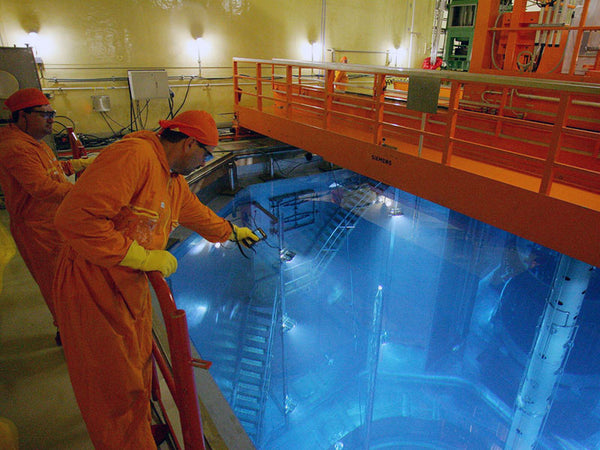
Modern people are quite familiar with "nuclear", and almost everyone knows atomic bombs and radioactivity. But they are afraid of it, especially when it comes to radioactivity, people always hold the attitude of staying away from it. Even the advanced method MRI used in the hospital for human tissue cross-section imaging has also removed the "nucleus" and called it "magnetic resonance" to prevent patients from being afraid of "nuclear radiation." In fact, human beings have always lived in a nuclear environment. Fundamentally, almost all energy comes from nuclear energy. The largest nuclear energy is solar energy, and nuclear reactions are constantly going on in the sun. Only with solar energy can there be organisms, and only with fossil energy, hydropower, and ocean energy. Geothermal energy must also be supplemented by nuclear energy. The earth itself has a large number of radioactive elements. Radioactive materials in the ground release nuclear energy due to the decay process, which maintains the temperature of geothermal; radioactive elements on the surface not only constitute the radioactive environment of the earth's background, but also transfer to the human body through the food chain and air. It's just that the radioactivity of the environment is very weak, and the human body has adapted to it. Of course, emissions from man-made nuclear facilities, such as nuclear power plants, must be limited to a certain level so as not to cause local pollution and damage. Nuclear power plants are strictly designed in this way, and there is no need to be afraid of it.
Penetration ability of various rays
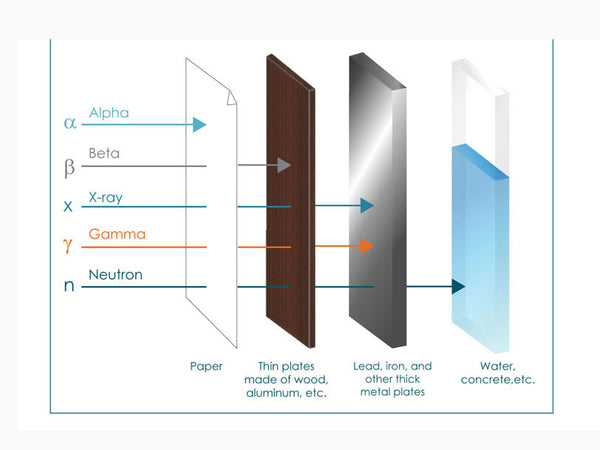
What is radioactivity? Radioactivity is a property of an element and manifests many elements such as uranium (U), thorium (Th), radium (Ra) and isotopes of some elements. Their nuclei are unstable and have changes towards a stable state. This change process will A stream of energetic particles shoots out and becomes radiation. These rays vary from element to element and have different properties. Generally speaking, there are three types: one is alpha (α) rays. The particles are composed of 2 protons and 2 neutrons, which are actually a kind of "helium nucleus flow". Because the particle is large, it can be hit hard, but its penetrating ability is weak, and a piece of paper can block it. As long as it is not eaten into the stomach through food, it is actually not terrible. The second is beta (β) rays. The particles are negatively charged, which is actually a stream of electrons with strong penetrating ability. Similarly, there are cosmic rays and neutron rays, collectively referred to as particle radiation. The third is gamma (γ) rays, which are also a short-wavelength electromagnetic wave with a strong penetrating force that can only be blocked by concrete walls. Similarly, there are X-rays, collectively referred to as electromagnetic radiation. There are many kinds of radiation, how to evaluate their strength and impact on human health? We can set aside their types and adopt a comprehensive measurement method. There are two main measurement indicators. One item is called "radioactivity", which is used to measure the intensity of radioactivity. In the past, the unit of measurement was "Curie". This unit was too large, but now the international unit system unit "Bek [Lehr]" (Bq) is used. (1 Curie = 3.7×1010 beques). Obviously, the greater the radioactive intensity, the greater the impact on the environment. The other item is called "dose equivalent", which is specifically used to measure the degree of radiation impact (biological effect equivalent) of radiation on organisms (including the human body). In the past, "rem
(Rem) is used as the unit, now "Sie [Wote]" (Sv) is used. This unit is also relatively large. What is actually used is one thousandth of it, called "millisievert" (mSv), (1rem=10mSv). The greater the radiation dose, the greater the impact on the human body.
Why should people not be afraid of radioactivity? Have to use science to speak.
Every ordinary person receives natural and artificial radioactive radiation and its doses as follows:
(1) Cosmic rays: 0.4~1 mSv, depending on altitude;
(2) Earth radiation: 0.3~1.3 mSv, depending on the nature of the soil;
(3) Human body: about 0.25 mSv, which varies from person to person;
(4) Radiotherapy: about 0.5 mSv, mainly for fluoroscopy;
(5) TV: about 0.1 mSv;
(6) Luminous watch: 0.02 millisievert;
(7) Coal-fired power plant: 1.0 mSv;
(8) Nuclear power plant: 0.01 mSv.
Radiation dose in life
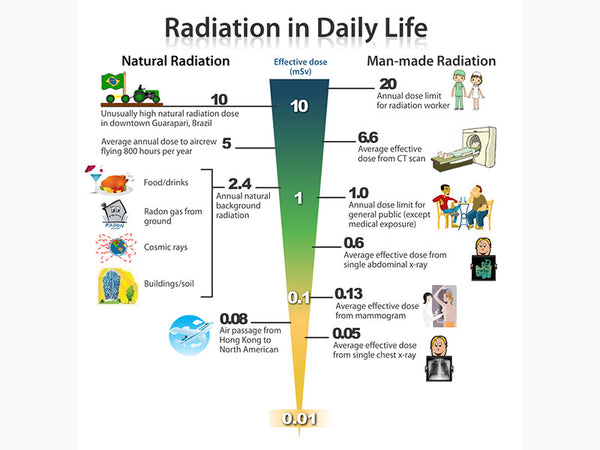
In addition, smoking, flying by plane, etc. will also increase the radiation dose. The total of the items listed above is about 2.5 millisieverts per year. Statistics show that the natural background is the most important radiation dose to the human body. In contrast, the radiation impact of nuclear power plants on residents is negligible, equivalent to taking an airplane once a year, which is much lower than the national safety standard of 0.25 mSv/year.
How many doses of radiation can a person bear each year without affecting their health? In order to protect the health of residents and workers engaged in radiological occupations, the state has stipulated a safe allowable dose of 5 mSv per year for the former and 50 mSv per year for the latter. Compared with the above-stated actual radiation dose of 2.5 mSv per year, there is still room for easing. Scientific research has also shown that a dose below 100 mSv has no effect on the human body; no clinical effect is found at 100-250 mSv. However, this one-time dose is far greater than the safe dose, which provides a reference for the environmental impact assessment of accidental accidents (such as the leakage of nuclear power installations), and people do not need to be too nervous.
